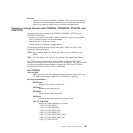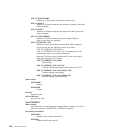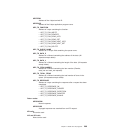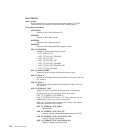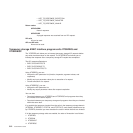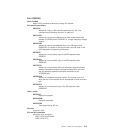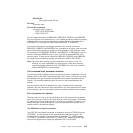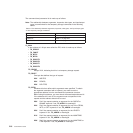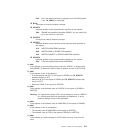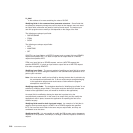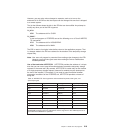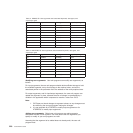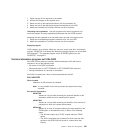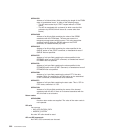UERCPURG
Task purged during XPI call.
XPI calls
All can be used.
API and SPI commands
All can be used, except for:
EXEC CICS SHUTDOWN
EXEC CICS XCTL
You can update the copies of EIBRSRCE, EIBRCODE, EIBRESP, and EIBRESP2
that you are given in the parameter list. If you update the values, temporary storage
copies the new values into the application program’s EIB after the completion of
XTSEREQC or if you specify a return code of UERCBYP in XTSEREQ.
You must set valid temporary storage responses. You must set all three of
EIBRCODE, EIBRESP, and EIBRESP2 to a consistent set of values, such as would
be set by temporary storage to describe a valid completion. CICS does not check
the consistency of EIBRCODE, EIBRESP, and EIBRESP2. If EIBRCODE is set to a
non-zero value and EIBRESP is set to zero, CICS will override EIBRESP with a
non-zero value. To help you set values for EIBRCODE, EIBRESP, and EIBRESP2,
the values used by temporary storage are specified in DSECT DFHTSUED.
Note: Take care when issuing recursive commands not to cause a loop. For
example, it is your responsibility to avoid entering a loop when issuing a
temporary storage request from the XTSEREQC exit. Use of the recursion
counter UEPRECUR is recommended.
The command-level parameter structure
The command-level parameter structure consists of a series of addresses. The first
address points to the EXEC interface descriptor (EID), which consists of a bit string
that describes the type of request and identifies each keyword specified with the
request. The remaining addresses point to pieces of data associated with the
request.
You can examine the EID to determine the type of request and the keywords
specified. You can examine the other parameters in the list to determine the values
of the keywords. You can also modify values of keywords specified on the request.
End of parameter list indicator
The high-order bit is set on in the last address set in the parameter list to indicate
that it is the last one in the list. On return from your user exit program, CICS scans
the parameter list for the high-order bit to find the last parameter. Therefore, if you
modify the length of the parameter list, you must also reset the high-order bit to
indicate which is the new last address.
The UEPCLPS exit-specific parameter:
The UEPCLPS exit-specific parameter is included in both exit XTSEREQ and exit
XTSEREQC. It is the address of the command-level parameter structure. The
command-level parameter structure contains 8 addresses, TS_ADDR0 through
TS_ADDR7. It is defined in the DSECT TS_ADDR_LIST, which you should copy
into your exit program by including the statement COPY DFHTSUED.
Chapter 1. Global user exit programs 215



